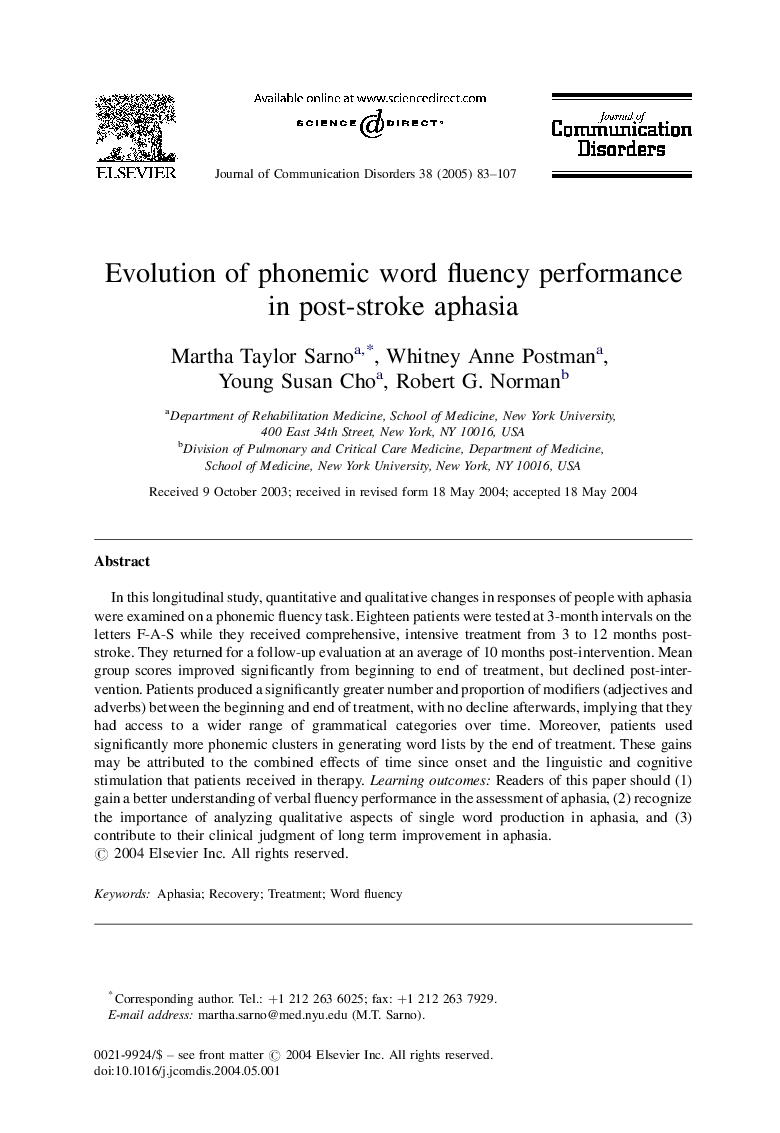| Article ID | Journal | Published Year | Pages | File Type |
|---|---|---|---|---|
| 10448580 | Journal of Communication Disorders | 2005 | 25 Pages |
Abstract
In this longitudinal study, quantitative and qualitative changes in responses of people with aphasia were examined on a phonemic fluency task. Eighteen patients were tested at 3-month intervals on the letters F-A-S while they received comprehensive, intensive treatment from 3 to 12 months post-stroke. They returned for a follow-up evaluation at an average of 10 months post-intervention. Mean group scores improved significantly from beginning to end of treatment, but declined post-intervention. Patients produced a significantly greater number and proportion of modifiers (adjectives and adverbs) between the beginning and end of treatment, with no decline afterwards, implying that they had access to a wider range of grammatical categories over time. Moreover, patients used significantly more phonemic clusters in generating word lists by the end of treatment. These gains may be attributed to the combined effects of time since onset and the linguistic and cognitive stimulation that patients received in therapy. Learning outcomes: Readers of this paper should (1) gain a better understanding of verbal fluency performance in the assessment of aphasia, (2) recognize the importance of analyzing qualitative aspects of single word production in aphasia, and (3) contribute to their clinical judgment of long term improvement in aphasia.
Keywords
Related Topics
Life Sciences
Neuroscience
Cognitive Neuroscience
Authors
Martha Taylor Sarno, Whitney Anne Postman, Young Susan Cho, Robert G. Norman,
